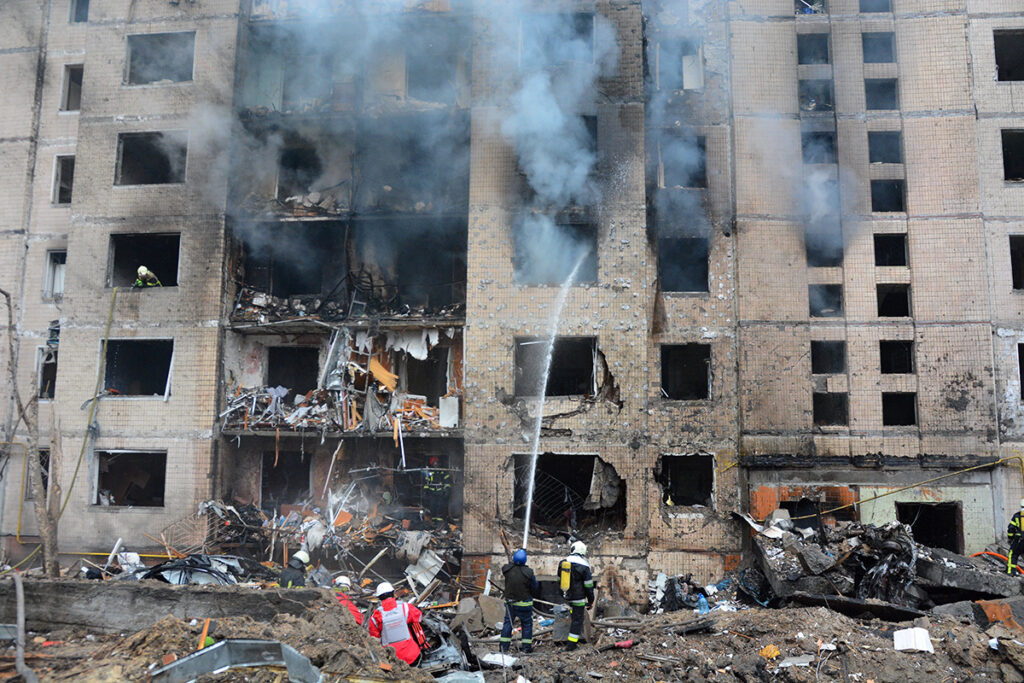Russian drones targeted the Ukrainian port city of Odesa in a recent wave of aerial attacks, causing injuries and large-scale fires. The assault resulted in emergency power outages in three districts, raising concerns over potential damage to the city’s energy infrastructure. Firefighters and emergency personnel were deployed to multiple locations to contain the blazes, with over 70 responders and 20 fire engines engaged in the effort.
The attack on Odesa took place shortly before Czech Republic President Peter Pavel’s visit, during which he met with regional officials. The assault underscored the persistent nature of the conflict, despite recent talks about a limited ceasefire. Ukrainian authorities denounced the attack and stressed the importance of maintaining international pressure on Russia through sanctions and military assistance.
Russia Accuses Ukraine of Gas Facility Explosion
In response to the attack on Odesa, Russia accused Ukraine of targeting a gas metering station in the Kursk region. Russian officials claimed the explosion was part of a broader effort by Ukraine to undermine recent diplomatic initiatives, particularly those led by the United States. The damaged facility was linked to a major pipeline that previously transported Russian natural gas to Europe before supplies were halted last year.
Ukraine denied responsibility for the explosion and accused Russia of staging the attack as part of a disinformation campaign. Ukrainian military officials stated that Russian forces themselves had shelled the gas metering station, possibly to create justification for further escalation.
Confusion Over Ceasefire Terms
The recent escalation comes after a ceasefire agreement was reportedly reached between Ukraine, Russia, and the United States. The truce, which was meant to limit attacks on critical infrastructure, has been overshadowed by disagreements regarding its scope.
The White House indicated that the agreement included both energy and general infrastructure, while the Kremlin insisted that only energy facilities were covered. Ukraine, meanwhile, sought broader protections, including railways and ports, which remain key logistical assets in the war. Further discussions in Saudi Arabia are expected to clarify the extent of the agreement.
Russian authorities stated that their military is adhering to a 30-day halt on energy infrastructure strikes, in line with the agreement. However, the attack on Odesa has raised doubts over Russia’s commitment to the truce and Ukraine’s ability to rely on international mediation.
Ongoing Attacks on Both Sides
Beyond the attack on Odesa, Russian airstrikes in Ukraine’s Zaporizhzhia region injured at least six people, including a child. Glide bombs damaged multiple residential buildings, with firefighters working overnight to extinguish resulting fires. Meanwhile, Ukrainian air defenses reported intercepting 114 out of 214 Russian drones launched in recent strikes, with another 81 jammed.
On the Russian side, authorities stated that air defenses intercepted 43 Ukrainian drones, primarily over the Volgograd region. Although no casualties or significant damage were reported, Ukrainian drone strikes have become more frequent. One of these strikes recently caused a large-scale blaze at an oil depot in Russia’s Krasnodar region, with firefighting efforts continuing in the aftermath of the attack.
The ongoing exchanges of fire underscore the fragile nature of the ceasefire and the persistent hostilities between the two nations, casting uncertainty over the prospects of any meaningful diplomatic resolution.


